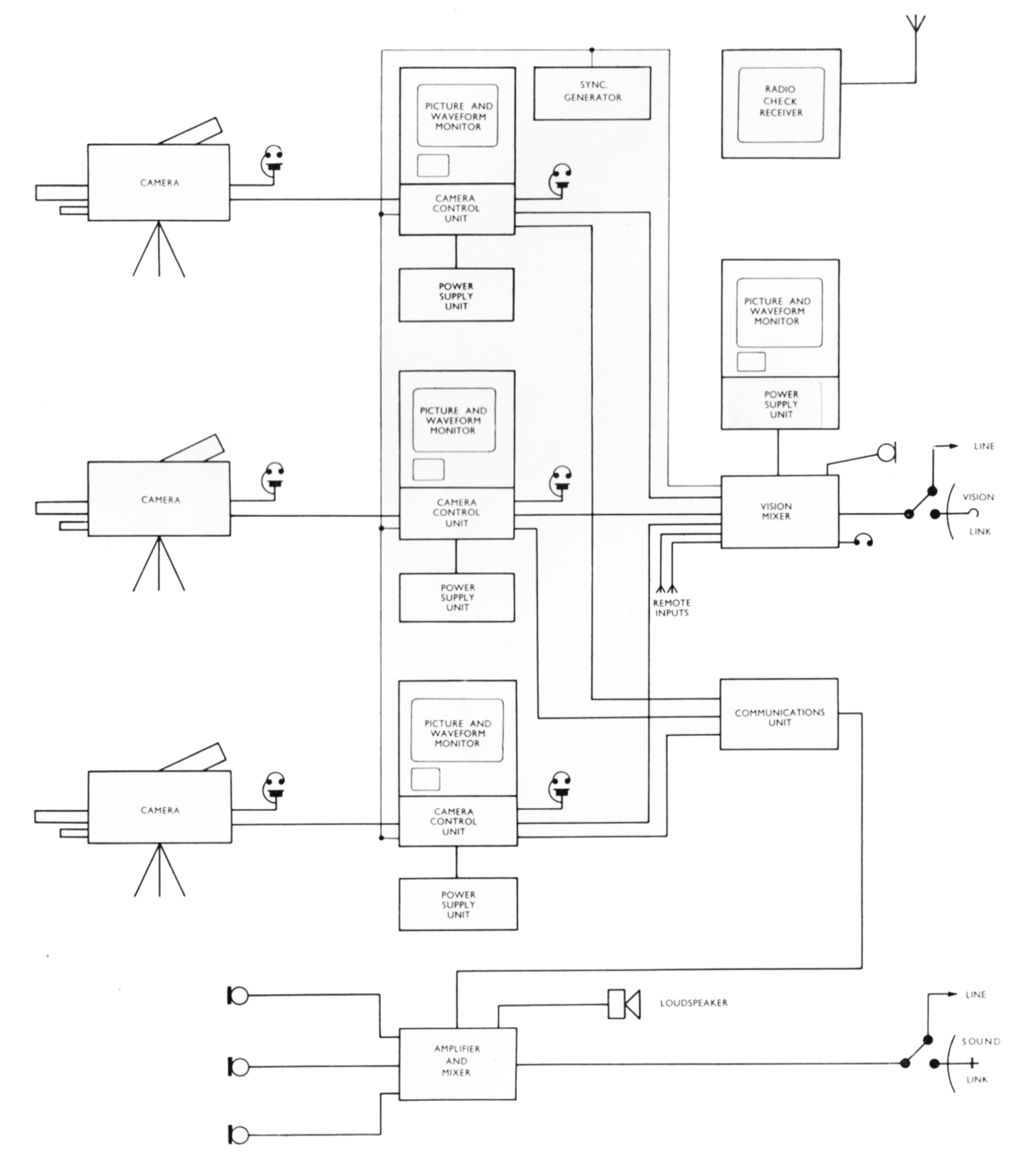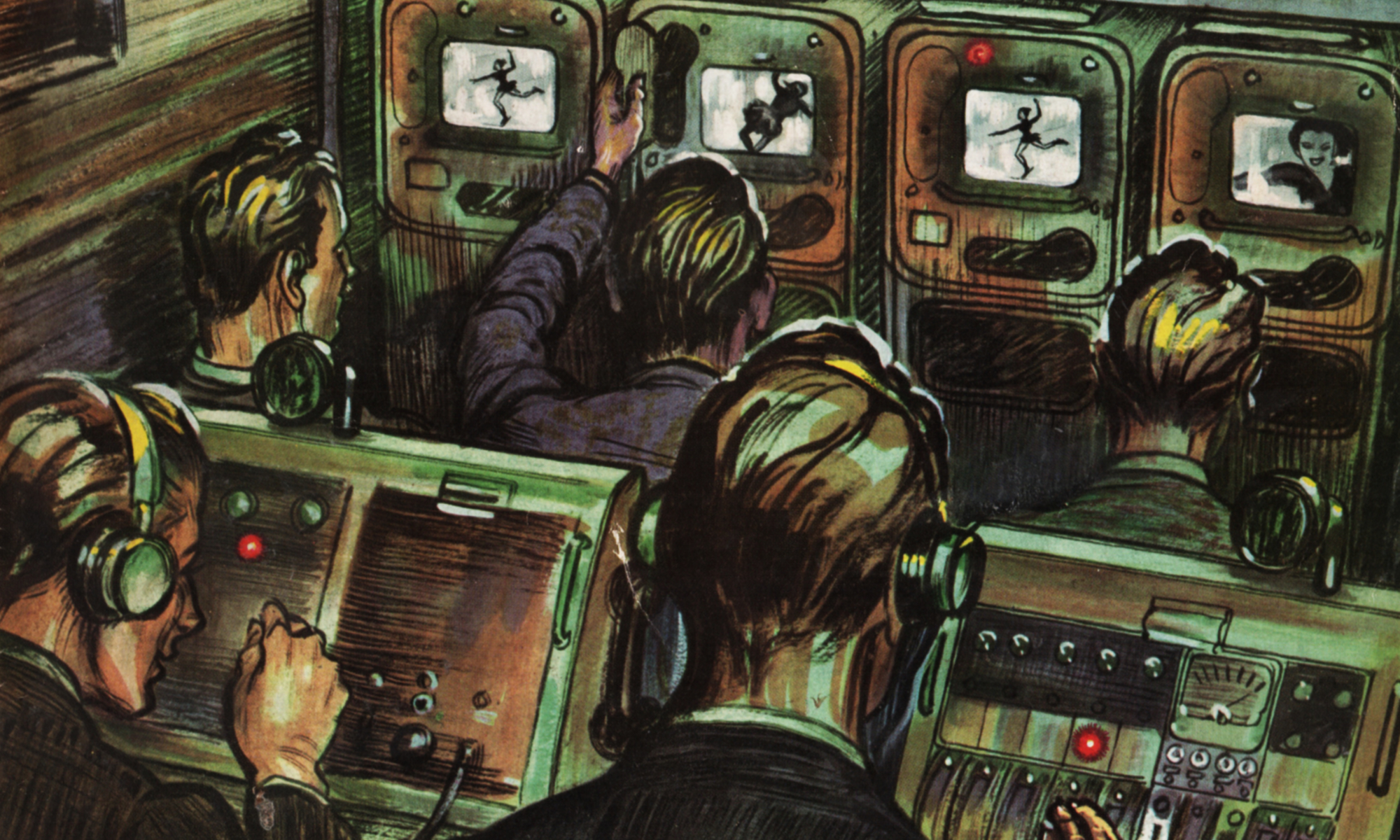The layout of a Mobile Television Unit will depend, of course, on the type vehicle being used, that is, chassis and type of body. The Marconi Company, whilst offering an engineering service to meet customer’s special requirements, have also produced two basic designs to meet the general needs in this field.
Each vehicle is completely self-contained, suitably heated and ventilated, and lighting and power points are conveniently disposed around it.
It is considered sufficient to operate a maximum of three camera channels from one mobile unit. Each channel has its own control and monitoring equipment, power units, etc., and feeds into a vision mixer. Synchronising signals are added and the final selected output is fed back to the main station or television centre. In general, each vehicle may be divided into three main parts — production position, control position and servicing area. The first of these provides for sound and vision mixing and the vehicle is so built that when seated at the controls, the producer has a clear view of all the camera control monitors. There are three camera control units which are arranged in a row side by side: each has its own monitor. A fourth monitor is provided for the use of the producer and is operated in conjunction with the vision mixer. An RF monitor is mounted centrally and above the camera control position.
The production and control positions may face either towards the rear of the vehicle or towards the front. In the latter case greater economy in cabling results and the servicing area may be completely shut off from the production area.
The power units, voltage control unit, synchronising generators, etc., are fitted in racks in the part of the vehicle immediately behind the driver’s cab. A ladder is provided to give access to the roof through a sliding hatchway. The cable drums are located in a well at the rear of the vehicle.
All units are shock-mounted and the whole of the control equipment may be built into a facia panel to give a neat overall appearance. Each vehicle is completely self-contained, suitably heated and ventilated, and lighting and power points are conveniently disposed around it. Both sound and vision links may be carried and space is provided for mounting these in the vehicle during transport.



